Again, going back to January (before my latest surgery), I had the pleasure and privilege of taking a root stand carving workshop with Sean Smith. Sean is probably the pre-eminent Japanese woodcraft artist active in the bonsai community in the U.S. today. You know, I once knew a man with a wooden leg named Smith. I never asked him the name of his other leg. But I bet it was Sean who carved the wooden one.

Sean has thought long and hard as to how a class like this is taught. He prepares blanks for the students to make it easier.
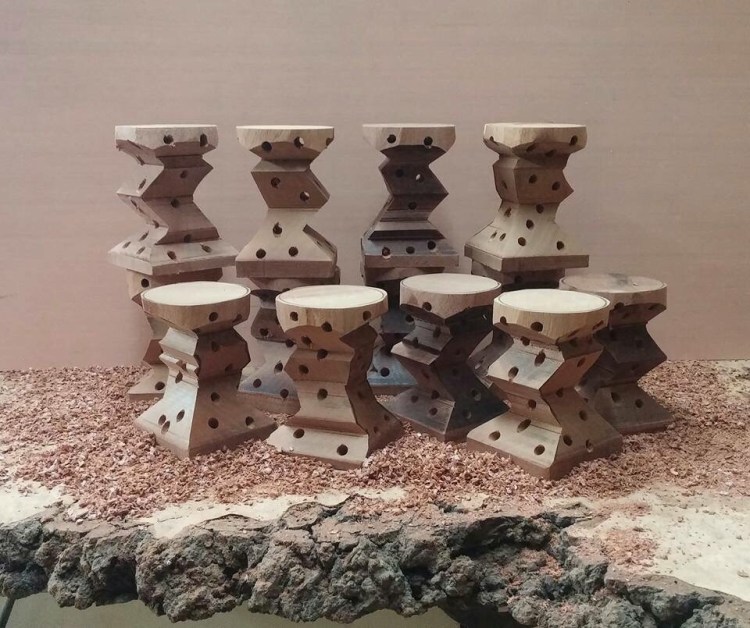 The above pic is off his Facebook feed. The wood we used was mahogany. It’s a good carving wood in that it holds detail well but it is also brittle along the grain so you have to be careful making too skinny details horizontally (the grain is running up and down on these blanks).
The above pic is off his Facebook feed. The wood we used was mahogany. It’s a good carving wood in that it holds detail well but it is also brittle along the grain so you have to be careful making too skinny details horizontally (the grain is running up and down on these blanks).
Here’s my virgin wood.
The class was well attended.
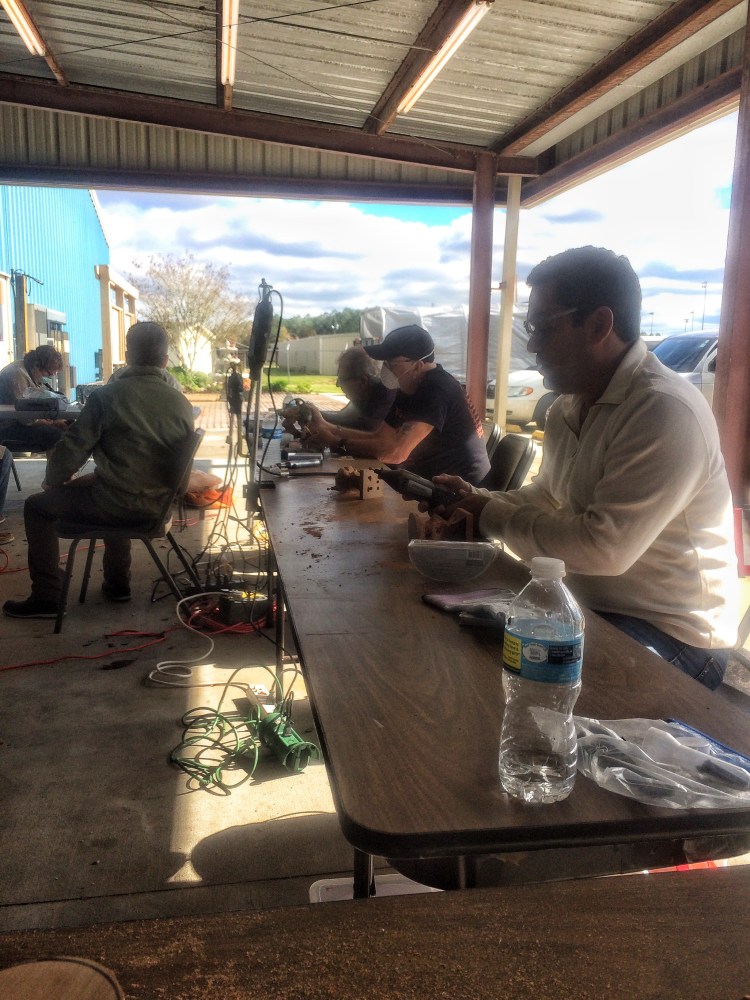 I believe we had 10 or 11 people. Sean covered the carving process in steps and helped those who needed it.
I believe we had 10 or 11 people. Sean covered the carving process in steps and helped those who needed it.
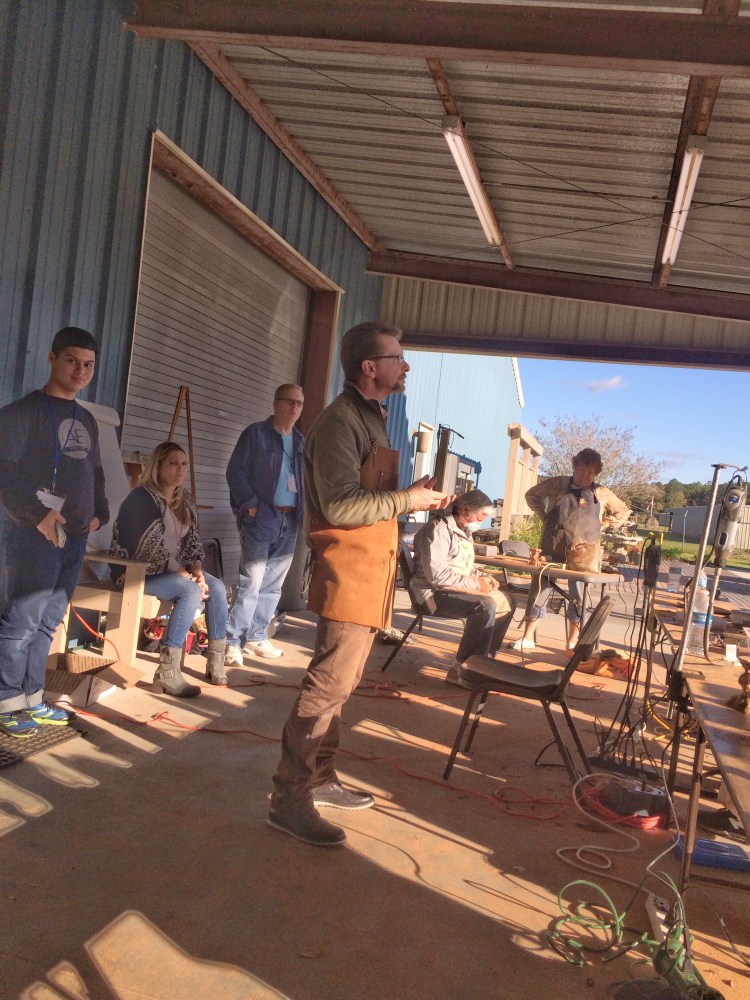 He first demonstrated what he wanted us to do.
He first demonstrated what he wanted us to do.
This is an example of one of Sean’s own root stands.
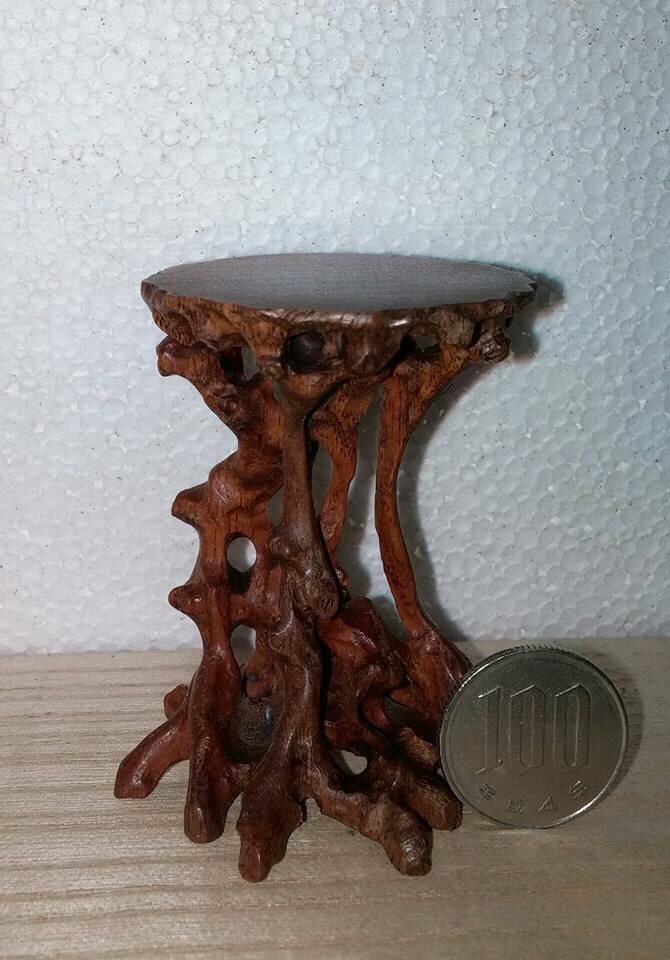 And the term “root stand” is a misnomer really, obviously it’s not a root we are carving but the whole process and technique is called “root stand”. I’m sure that there are some that are actually roots but most you see are carved in a similar process.
And the term “root stand” is a misnomer really, obviously it’s not a root we are carving but the whole process and technique is called “root stand”. I’m sure that there are some that are actually roots but most you see are carved in a similar process.
Now, a little about Sean: he doesn’t just do root stands. He is a classically trained diaza carver.
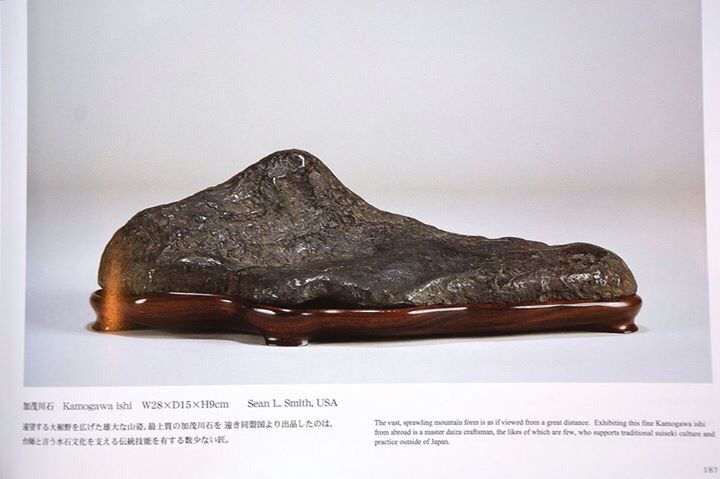 That’s the base a suiseki sits on (a suiseki is a stone that tends to look mountain like or such. It’s a whole ‘nother art that requires a book to explain. Look it up). The stone above was featured in the 3rd annual Nippon Suiseki Exhibit at the Metroplitan Museum of Art in Tokyo. One of the only westerners to have that honor.
That’s the base a suiseki sits on (a suiseki is a stone that tends to look mountain like or such. It’s a whole ‘nother art that requires a book to explain. Look it up). The stone above was featured in the 3rd annual Nippon Suiseki Exhibit at the Metroplitan Museum of Art in Tokyo. One of the only westerners to have that honor.
Sean also builds bonsai stands-
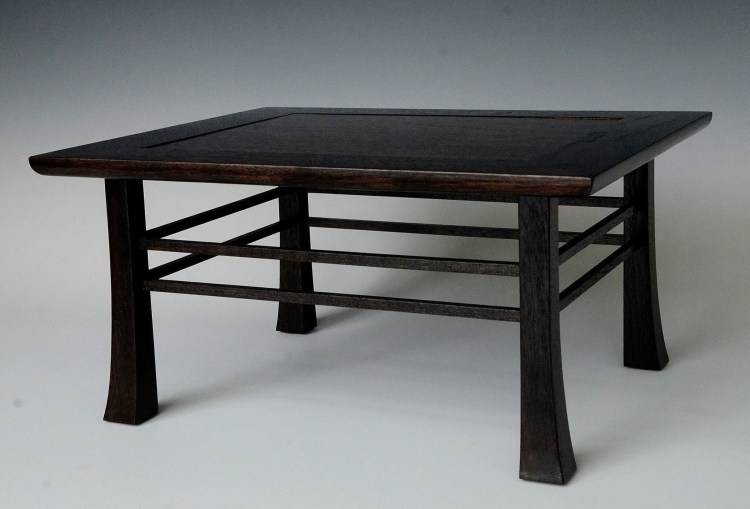 And most anything else that is Japanese woodcraft.
And most anything else that is Japanese woodcraft.
He is also an excellent bonsai artist.
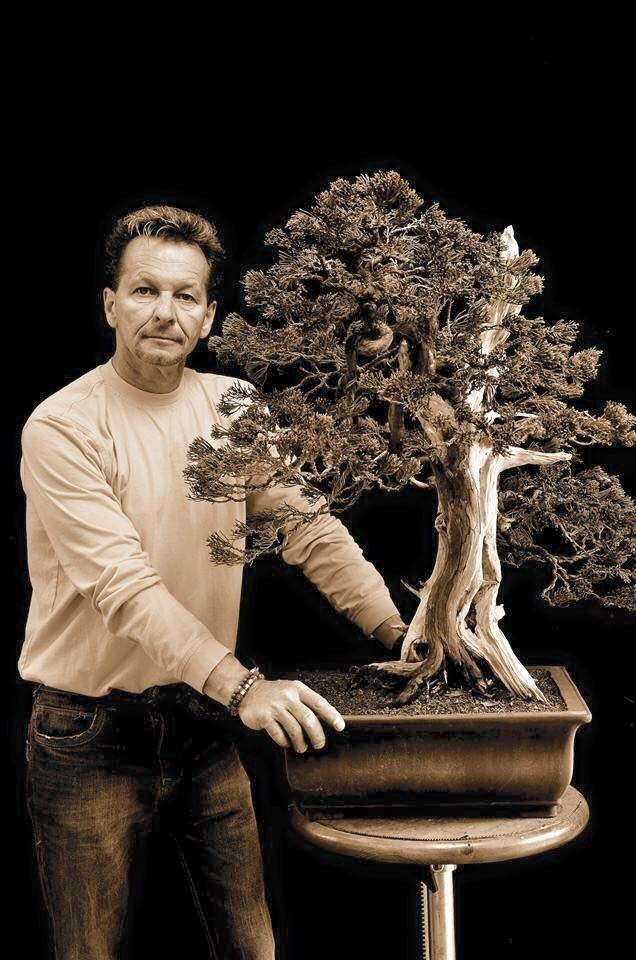 He styles in a beautifully naturalistic (and classical) style that most modern bonsai artists have abandoned. He also likes to pose with his trees. If I worked on the trees he gets to work on, I would too.
He styles in a beautifully naturalistic (and classical) style that most modern bonsai artists have abandoned. He also likes to pose with his trees. If I worked on the trees he gets to work on, I would too.
Getting back to the class, here I am during it.
 This is becoming my look. The masked carver.
This is becoming my look. The masked carver.
And after it was over. The group.
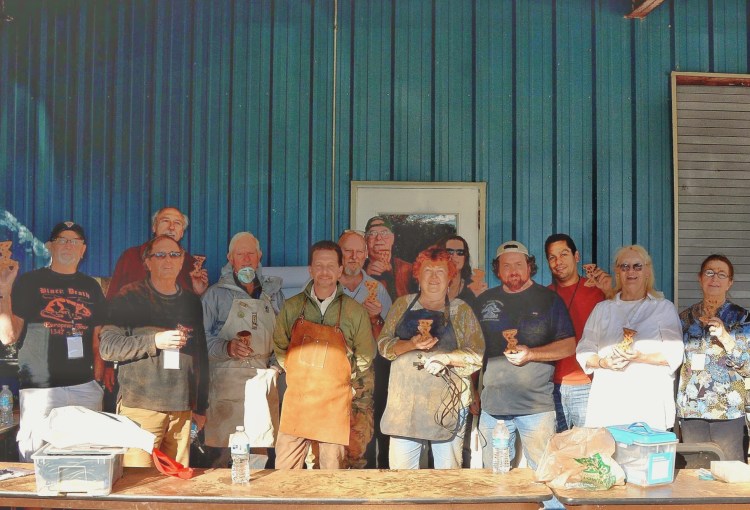
My stand at the end of the session.
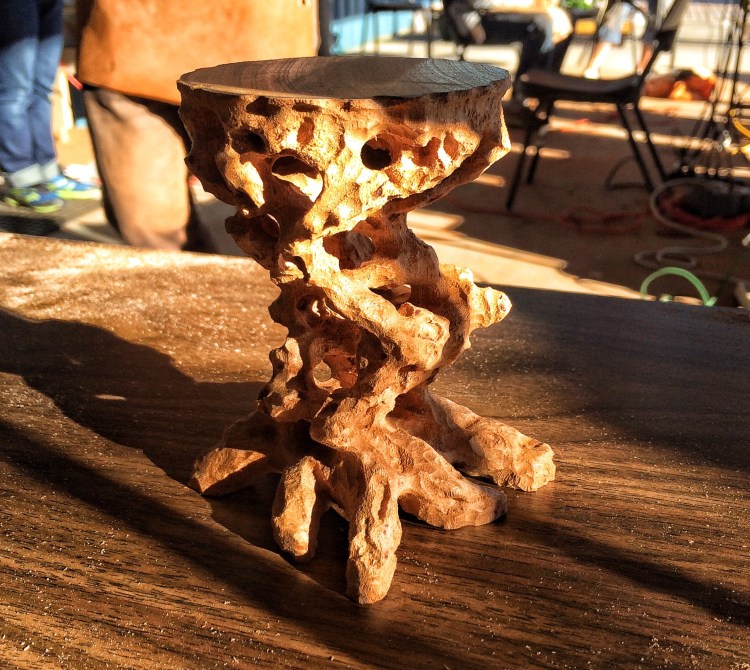
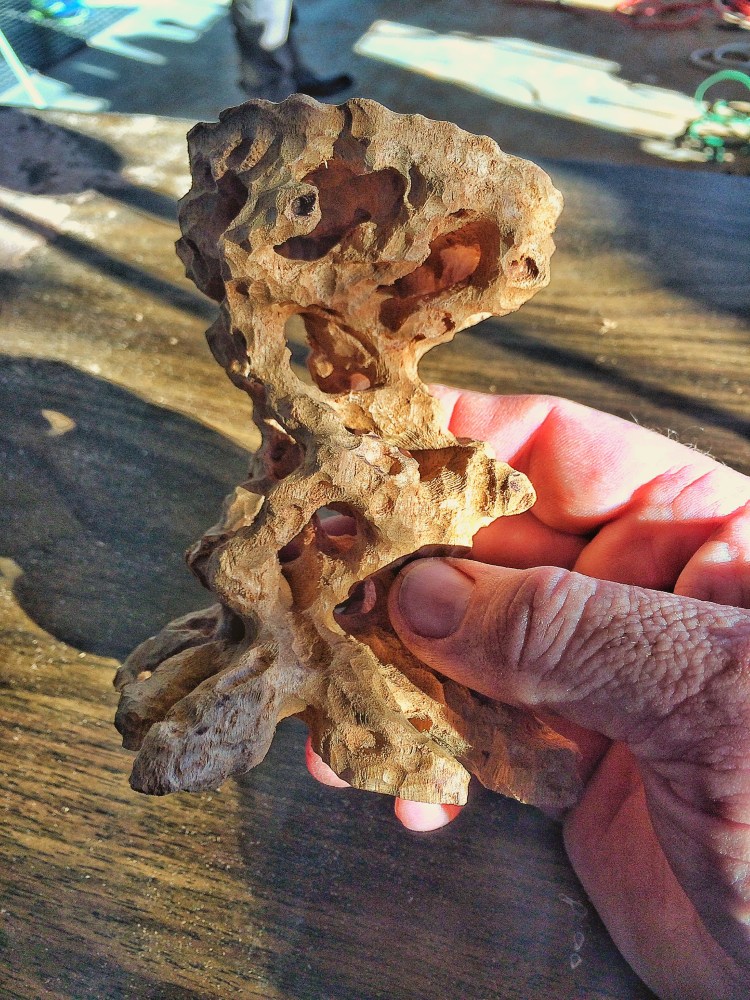 It wasn’t finished there. I took it home and fiddled around with it some more.
It wasn’t finished there. I took it home and fiddled around with it some more.
Here is another participants stand, actually “finished”
 It was carved by Phil, who’s the tall guy in the back, on the left, in the group pic above.
It was carved by Phil, who’s the tall guy in the back, on the left, in the group pic above.
 He used a mahogany stain (ironically) on his, with a gloss finish.
He used a mahogany stain (ironically) on his, with a gloss finish.
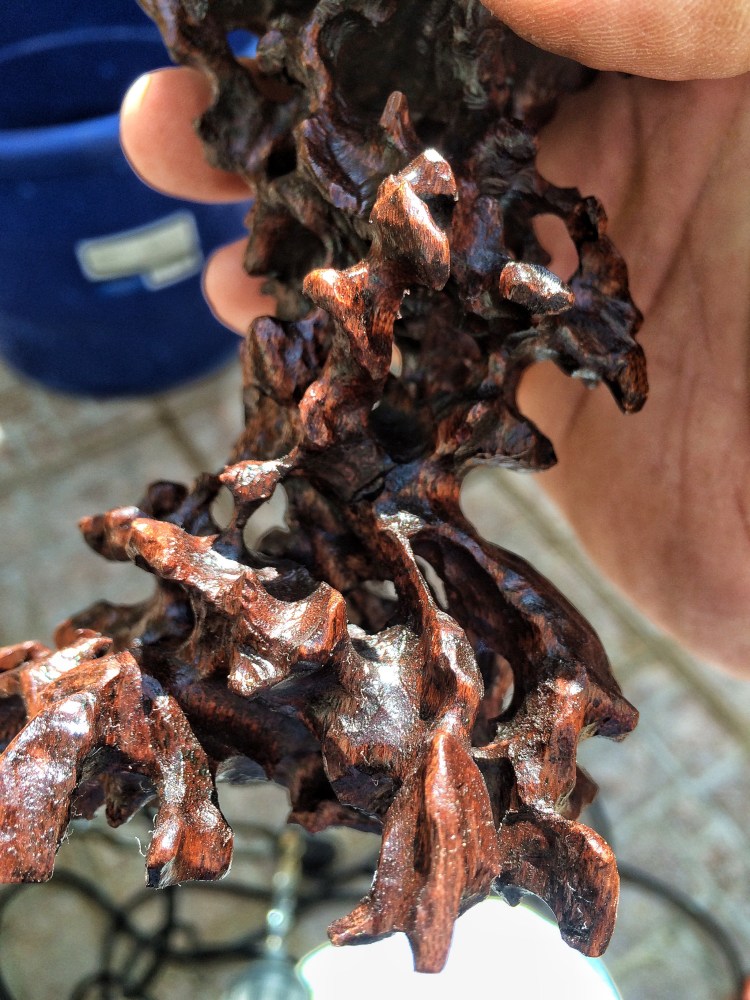 I think it came out spectacularly.
I think it came out spectacularly.
My stand, still not finished, very much in a state of abandonment.
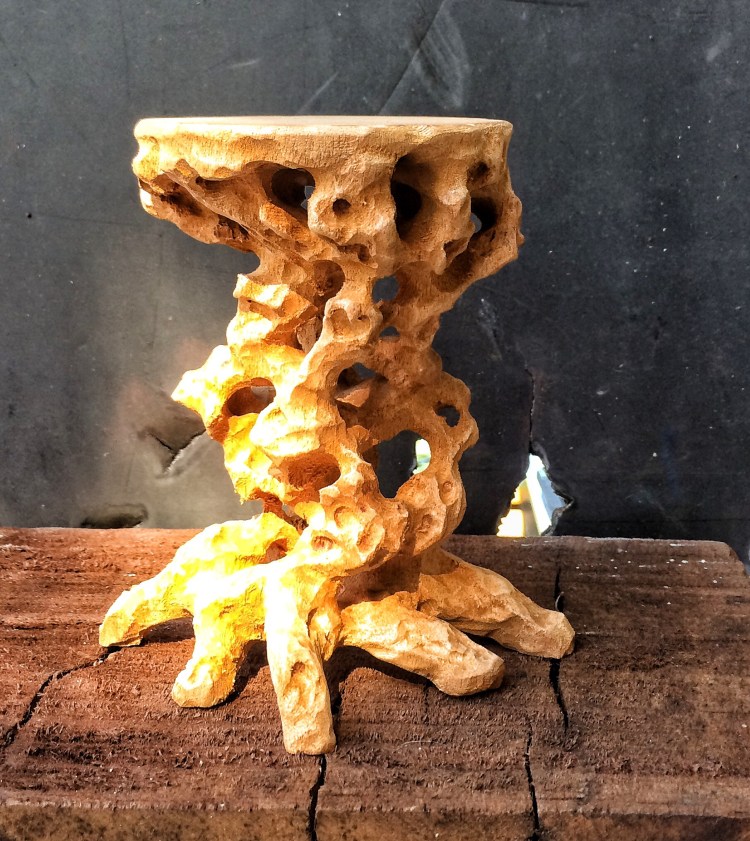
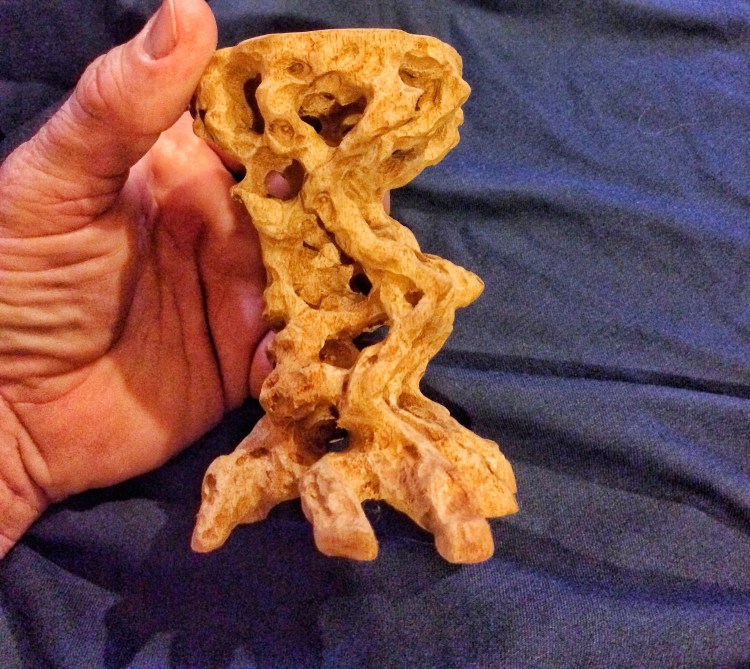

I’ll post some pics on social media when I do finally finish it.
Thank you for the class Sean, I learned a lot. I wish I had gotten to spend some more time with you after the class, see you soon.
If your club or convention is looking for a good hands on class, I recommend contacting Sean Smith. He has Diana carving classes, stand building classes, miniature tokanoma building classes (which is as cool as it sounds). You will not be disappointed.

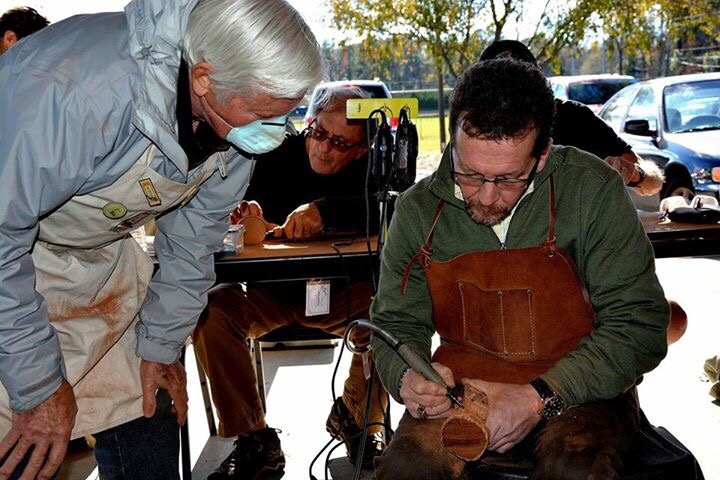
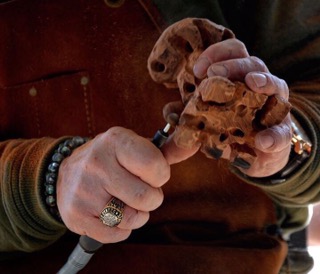
Great post Adam. Interesting new art form this suiseki, I am going to check it out. Thanks!
LikeLike
Reblogged this on Wolf's Birding and Bonsai Blog.
LikeLike
I have really been getting into Japanese woodworking and have considered going into it professionally, but I read that in Japan it is considered necessary to be an aprentice for 15 years working pretty much all day everyday to really learn the craft. Do you know how he got his training? Taking a lot of classes can get expensive, but I’m not sure that I could commit to being an apprentice for that long.
LikeLike
Unless you wanted to travel to Japan you won’t find an apprenticeship like that here.
He trained in Japan but I’m not sure if it was a full apprenticeship. The good thing about the modern Information Age is that there is everything you need to know in books and on websites. The old way of master/apprentices was to keep secrets from the common man so you’d have to buy their products. There are many books on japanese carpentry available, you’ll just have to get the tools and learn how to use them.
LikeLike
I got some good Japanese tools to use and several books on carpentry- that is where I read that about the apprenticeship. It was written by an Westerner who was an apprentice for five years working 80-90 hours per week as an apprentice, though he said that five years is considered the minimum to learn the basics. Books are great and I have gotten nearly 20 used on the subject, but I think they can only go so far as lot of things regarding technique must be taught in person.
LikeLike
I think your stand is wonderful just as it is now. I like the rustic look to it!
LikeLiked by 1 person
Thank you
LikeLike
hello, what brand of cutter do you use? What type of cutter?
LikeLike
That was a bit I got from http://www.woodcarverssupply.com
They come in many different sizes. Go to the lower carving area on the website and look for the Mastercarver flex shaft bits
LikeLike